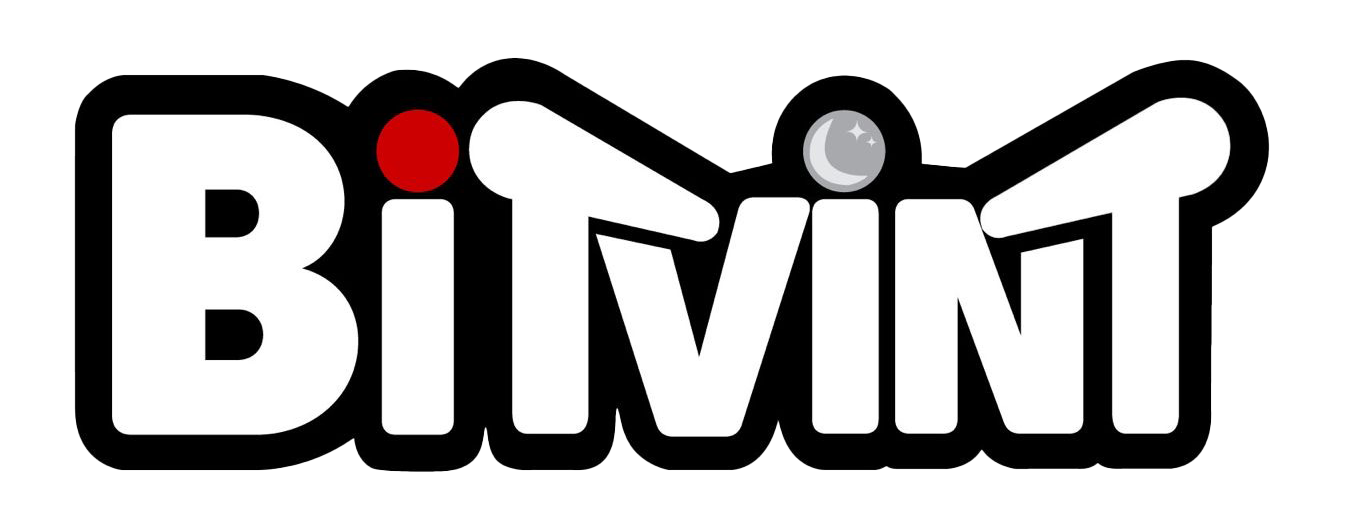Introduction
Released in 1982 by Irem and distributed in North America by Williams Electronics, Moon Patrol became one of the first side-scrolling shooters in arcade history. Players controlled a lunar buggy traversing treacherous alien terrain while dodging obstacles and blasting enemies. Its combination of shooting mechanics, platforming challenges, and scrolling backgrounds made it a groundbreaking title and an enduring arcade favorite.
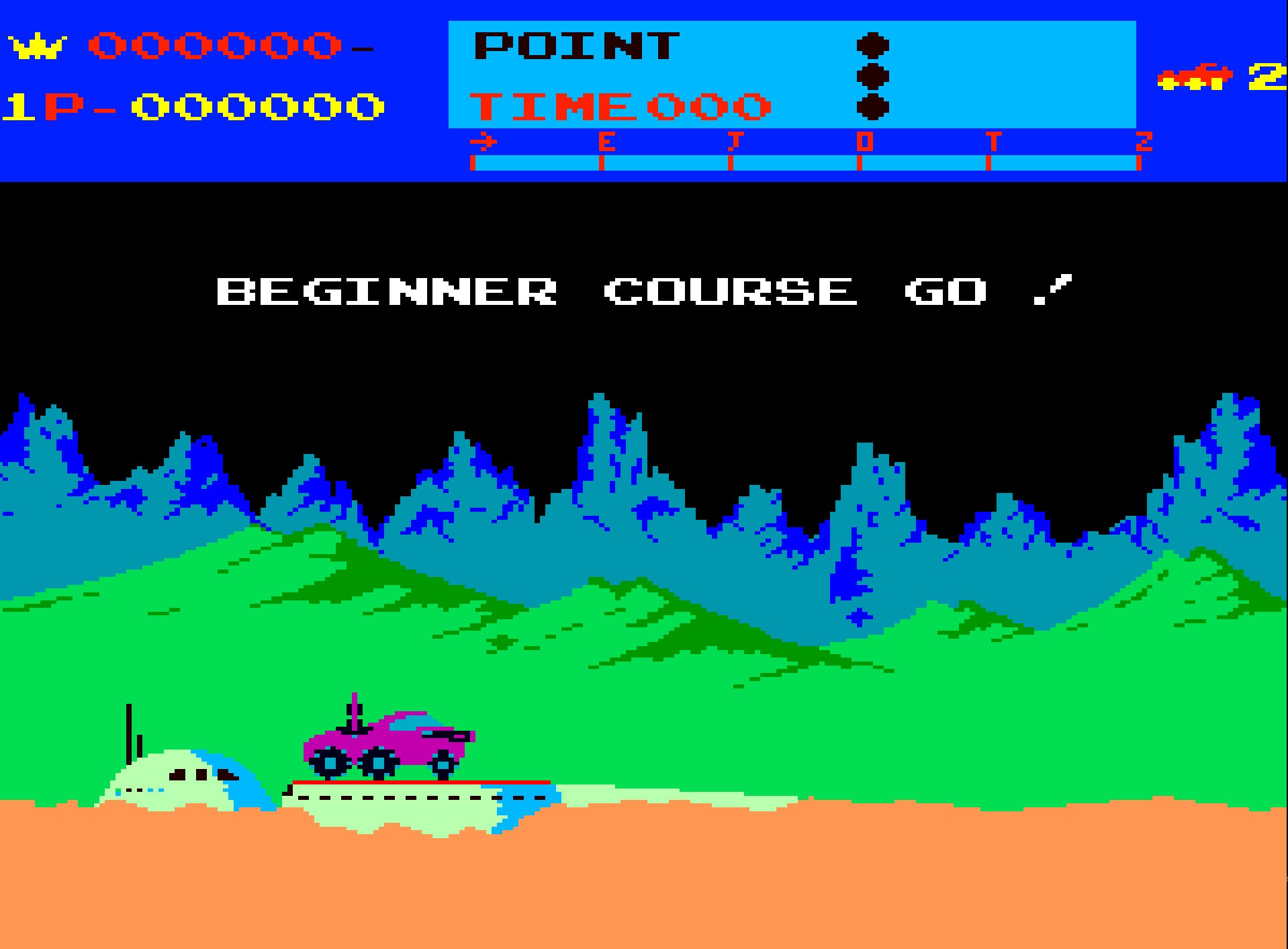
Gameplay and Mechanics
In Moon Patrol, players guide a moon buggy across a hazardous lunar landscape filled with craters, land mines, and alien enemies.
Key Gameplay Features:
- Side-Scrolling Action: One of the earliest games to use smooth, side-scrolling backgrounds, adding depth and motion.
- Obstacle Avoidance: Jump over craters and land mines while dodging aerial attacks.
- Dual Weapons System: Shoot forward at ground enemies and upward at airborne foes simultaneously.
- Checkpoint System: Progress is marked by checkpoints labeled A–Z, breaking the course into segments.
- Challenging Levels: Includes beginner and champion courses, increasing difficulty for experienced players.
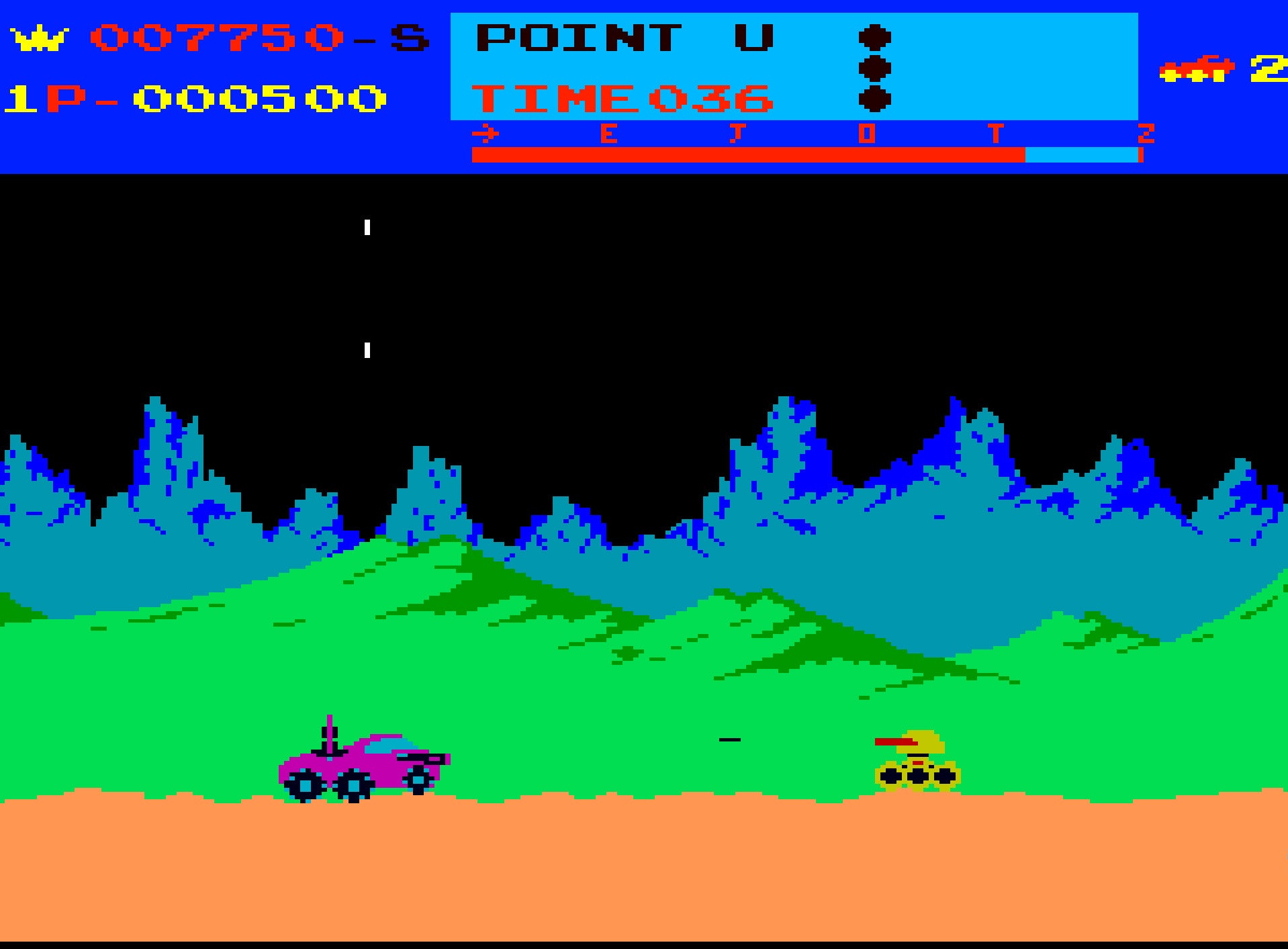
Moon Patrol Gameplay Video
Design and Development
Moon Patrol was developed by Irem, a Japanese video game company, and later distributed in North America by Williams Electronics. It stood out for its innovative scrolling system and dual-shooting mechanics.
Technical Innovations:
- Parallax Scrolling: One of the first arcade games to use parallax scrolling, creating the illusion of depth with background layers moving at different speeds.
- Dynamic Sound Design: Integrated sound effects and background music that evolved with gameplay intensity.
- Responsive Controls: The jump and shoot mechanics were praised for being intuitive and smooth.
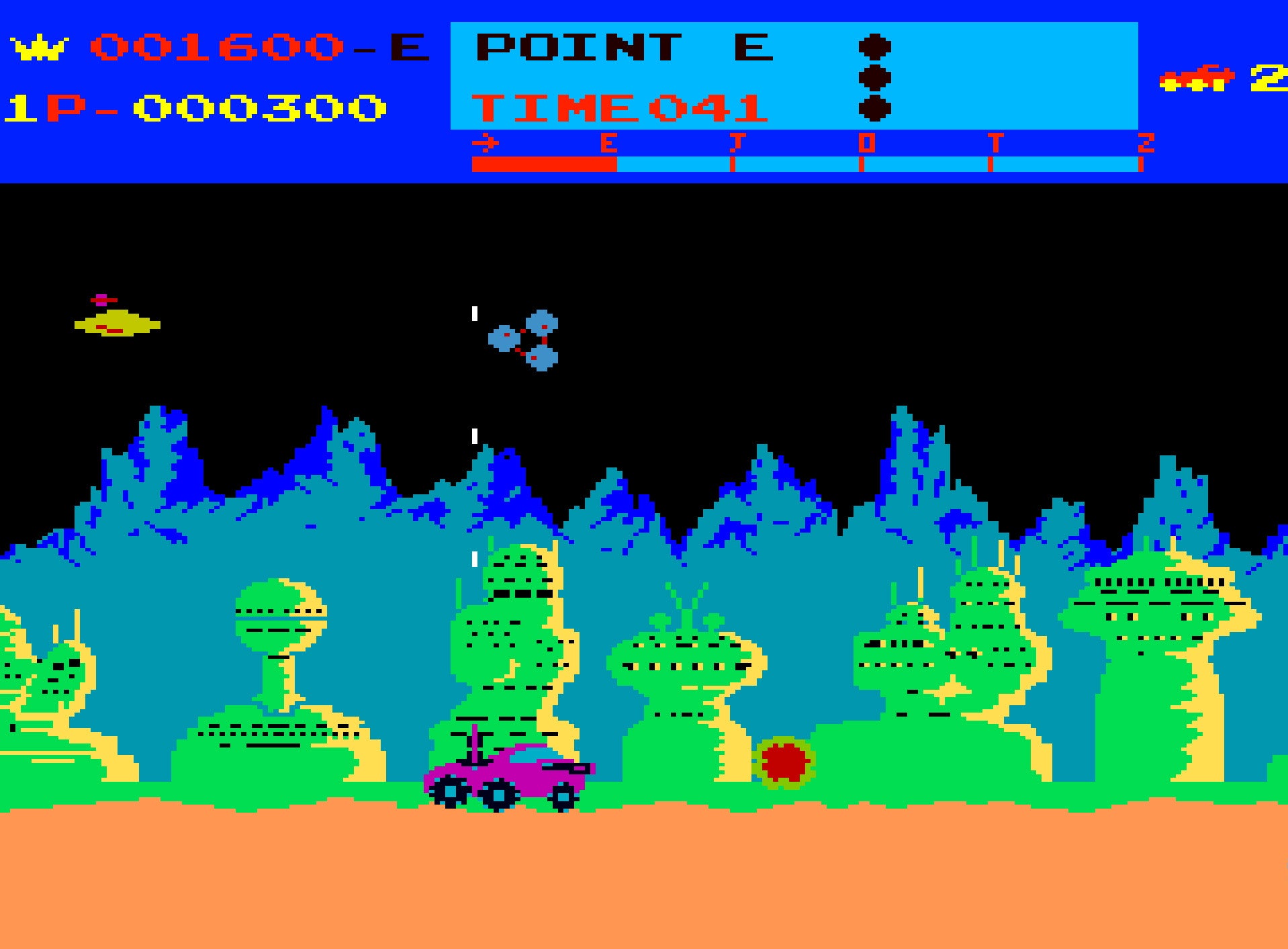
Cultural Impact
Moon Patrol was widely recognized for its technical advancements and engaging gameplay, earning a place among arcade legends.
Legacy and Influence:
- Home Console Ports: Ported to systems like the Atari 2600, Atari 5200, Commodore 64, and Apple II.
- Gaming Innovation: Influenced later platform shooters and scrolling action games.
- Competitive Play: Became popular in arcades for high-score challenges and competitive gameplay.
- Collector’s Favorite: Arcade cabinets are now highly prized among retro gaming enthusiasts.
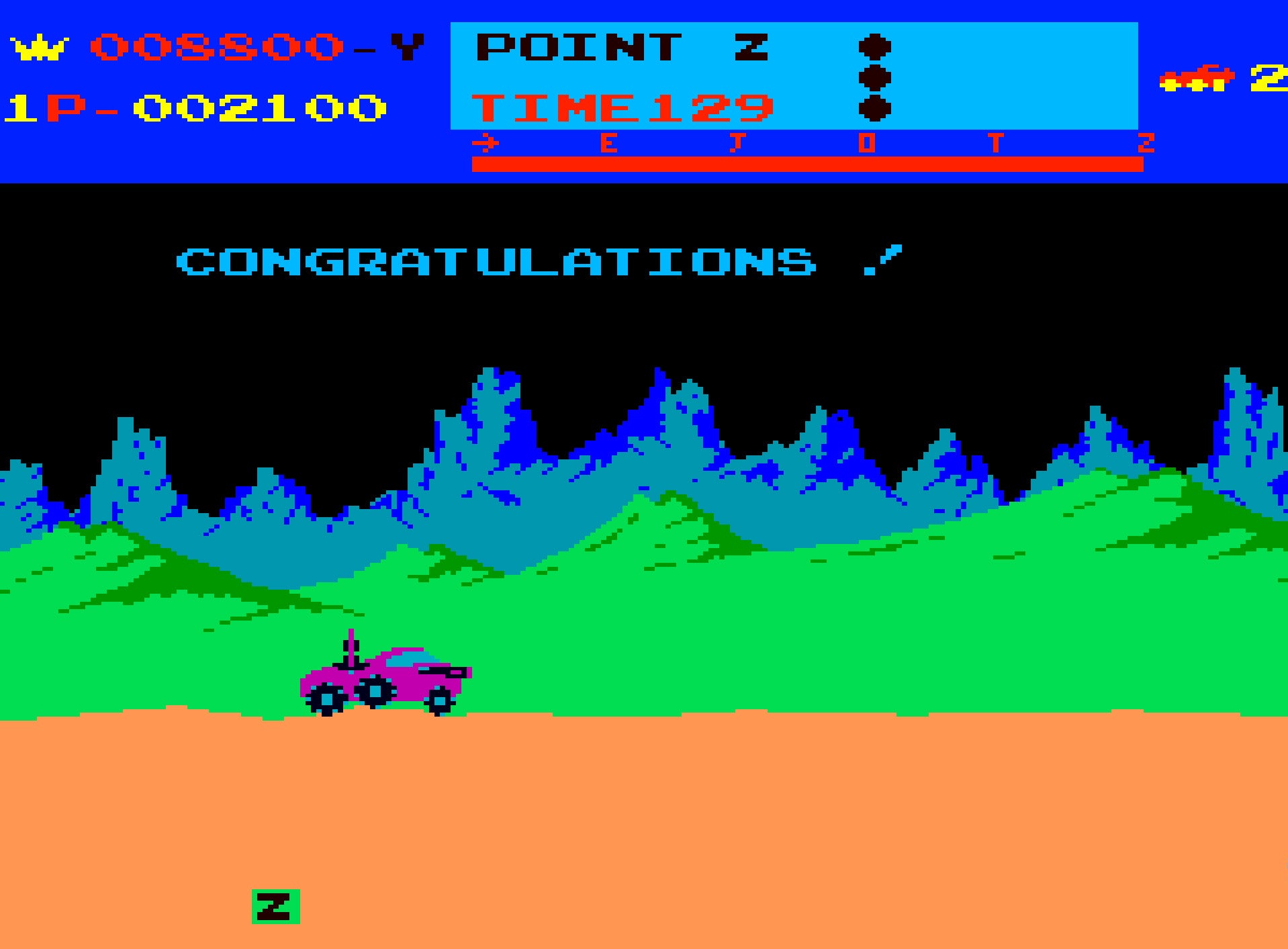
Tips for Playing Moon Patrol
- Jump Timing: Practice precise jumps to avoid craters and mines without overshooting into danger.
- Target Priorities: Focus on airborne enemies first, as they drop bombs that can cause unexpected damage.
- Manage Speed: Control your speed to anticipate obstacles and plan jumps effectively.
- Checkpoint Strategy: Use checkpoints to reset after crashes and minimize score loss.
- Memorize Patterns: Enemy and obstacle patterns repeat, so learning them gives an edge during difficult sections.
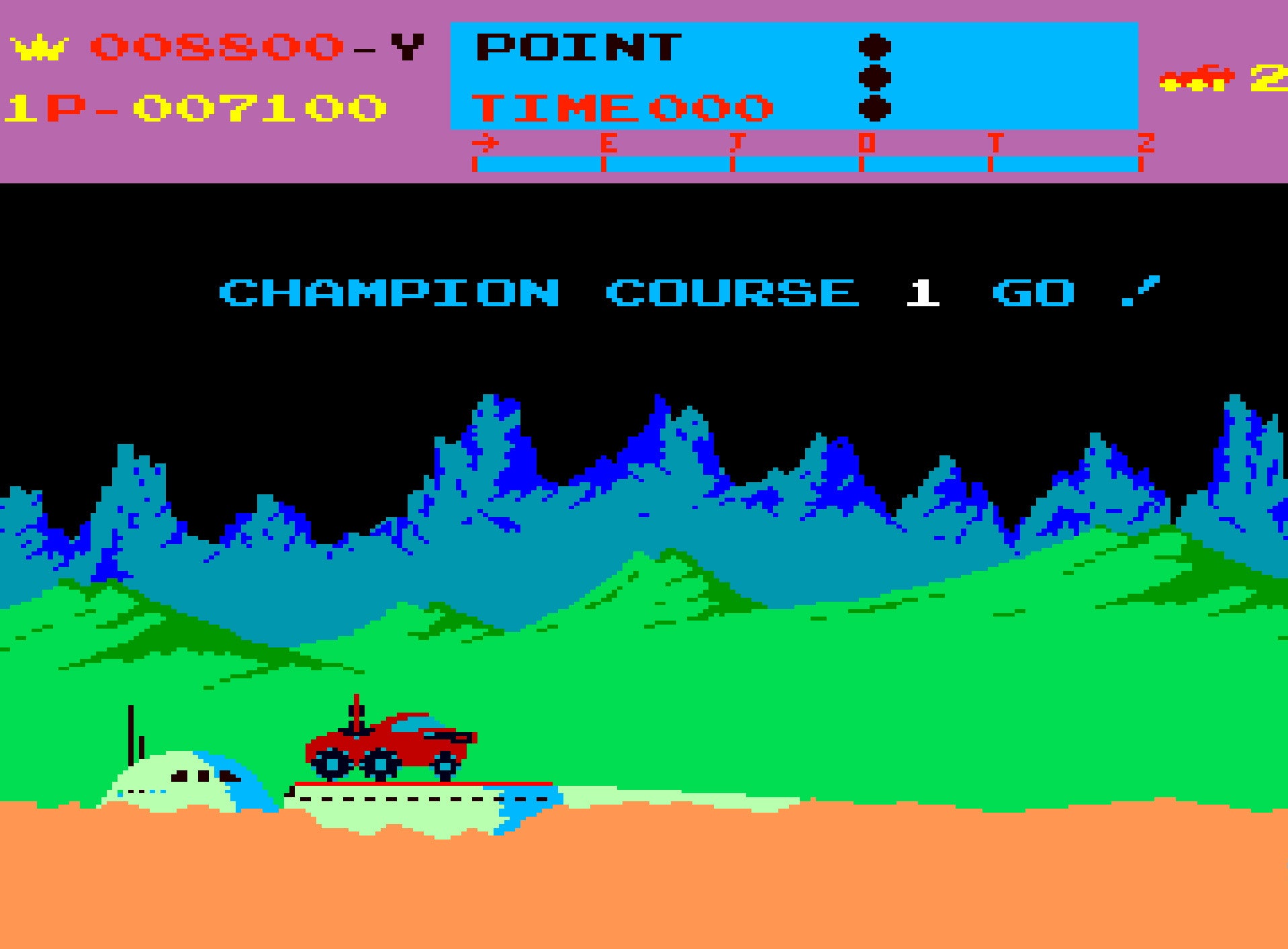
Fun Facts
- Parallax Pioneer: Credited as one of the first games to use parallax scrolling for depth perception.
- Checkpoint System: Introduced an A–Z checkpoint system, a design element later adopted by other games.
- Music Integration: Featured background music—a novelty at the time—that shifted in tone based on gameplay progression.
- Cabinet Variations: Available in upright and cocktail table versions, appealing to different arcade setups.
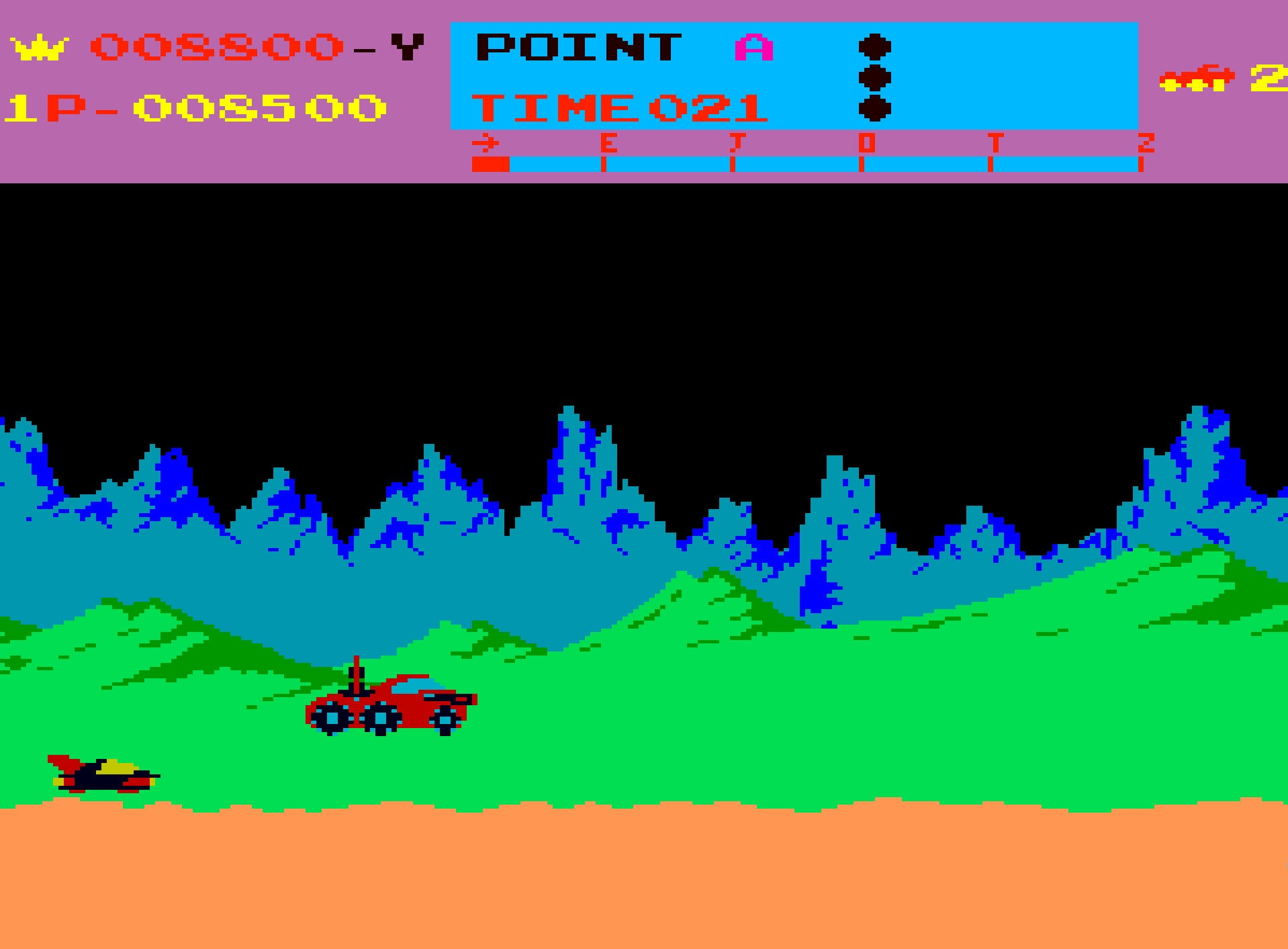
Conclusion
Moon Patrol pushed arcade innovation with its parallax scrolling, checkpoint system, and dual-shooting mechanics. Its influence on side-scrolling shooters and action games is still felt today. Whether you’re reliving memories or experiencing it for the first time, Moon Patrol delivers timeless arcade thrills.
Explore More Arcade Legends
- Spy Hunter – A thrilling vehicular combat classic.
- Pole Position – The racing game that redefined arcade driving.
- Paperboy – A quirky adventure of newspaper delivery and obstacles.
